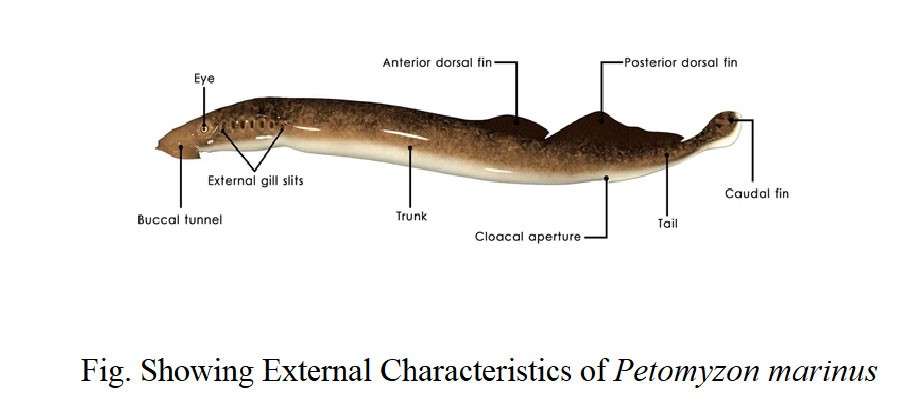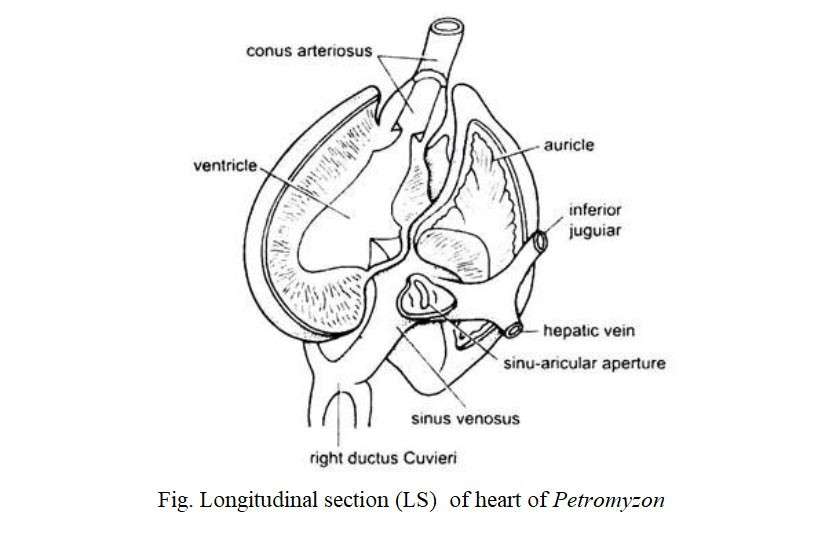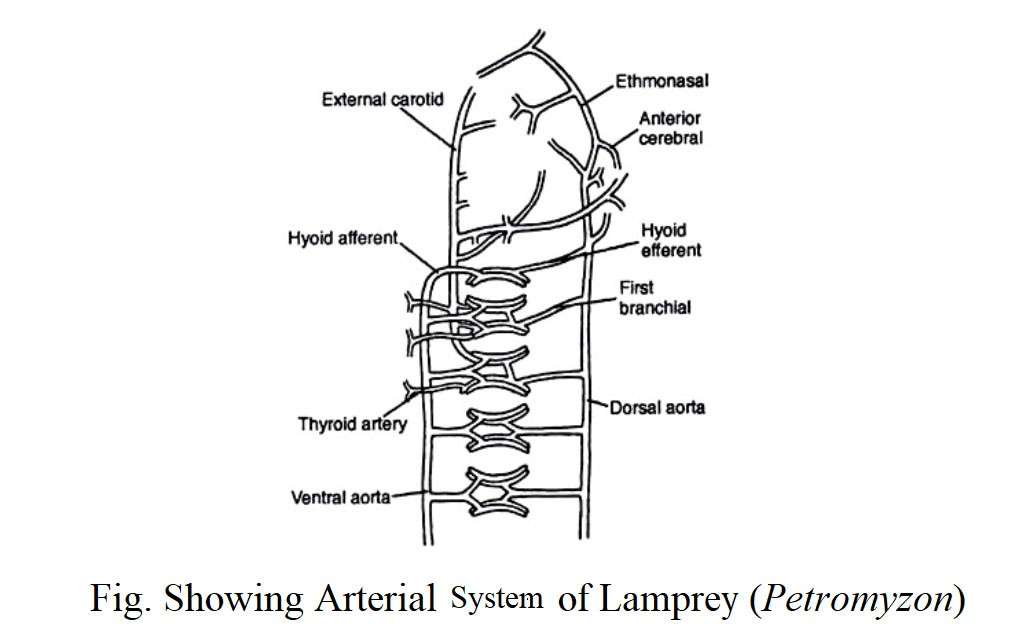Lampreys are eel like scaleless and jawless animals which belongs to the family Petromyzontidae under order Petromyzontiformes of class Cephalaspidomorphi. They are found in coastal and freshwater habitats around the world except Africa. They can grow up to 100 cm in length with well-developed eyes. They have one or two dorsal fins with seven gill openings on each side. They have round sucking mouth with horny teeth and the skeleton is consisted of cartilage.
Systematic Position
- Phylum: Chordata
- Subphylum: Vertebrata
- Class: Cephalaspidomorphi
- Order: Petromyzontiformes
- Family: Petromyzontidae
- Genus:Petromyzon
- Species: Petromyzon marinus (Sea lamprey)
Circulatory System of Lamprey
They have no true lymphatic system but in adult stage, it includes a system of venous sinuses which communicate with the blood vessels. In lampreys, the circulatory system is semi-closed type and it consists of the following parts:
- a heart,
- arterial system and
- venous systems
Arterial System of Lamprey
From the ventricle, a large ventral aorta emerges and moves forward through the gill pouches. The base of the ventral aorta is slightly swollen. Some researchers have named this swollen part as the bulbous arteriosus. Eight afferent branchial arteries from the ventral aorta enter into the gill pouches. The afferent branchial arteries divide into capillaries in the gills. Blood is collected from the gills by eight efferent branchial arteries.
Each of the afferent and efferent branchial arteries supplies blood to the posterior hemibranch of a gill pouch and the anterior hemibranch of the next. Each efferent branchial artery carry oxygenated blood from the gill pouch to the paired dorsal aortae. This paired dorsal aortae run backwards and joins to form a single median dorsal aorta. From this dorsal aorta, segmental arteries arise which enters into the myotomes. The segmental artery contains scattered chromafin cells that represent scattered adrenal medulla. Its secretion is similar to that of mammalian adrenaline.
Special arteries are produced from the unpaired dorsal aorta and supply blood to the intestines, kidneys and gonads. With the exception of the efferent branchial and renal arteries, most other arteries have valves at their origin. These valves play an important role in lowering blood pressure in most arteries. Blood flows forward through the ventral aorta and backwards through the paired and unpaired dorsal aortae.
Venous System of Lamprey
Their venous system consists of a complex network of true veins and sinus venouses. Blood is transported from the caudal region through a large caudal vein. This vein divides into two posterior cardinal veins just at the entrance into the abdominal cavity. Cardinal veins collect blood from the kidneys, gonads, and myotomes and ultimately opens to the heart by a single ductus cuvieri on the right side.
The left ductus caviary does not remain in adulthood. Although their presence can be noticed in the larval stage. Blood enters to the heart from the anterior region of the body through a pair of anterior cardinal veins. In addition to these anterior cardinal veins, a large median inferior jugular vein carries blood from the musculature of the buccal funnel and gill pouches. There are no renal portal veins in the lamprey. However, a hepatic portal vein collects blood from the intestine and enters into the liver through a contractile portal heart. A very simple type of portal system exists in the lamprey that connects the hypothalamus with the pituitary.
Blood from the liver enters into the heart through hepatic veins. In addition to the veins, special network of the venous sinus exists, especially in the head region. The branchial sinus is a very important sinus and consists of three longitudinal channels, namely:
(1) The ventral branchial sinus or the ventral jugular sinus;
(2) Inferior branchial sinus which is located below the gill pouches;
(3) Superior branchial sinus which is located above the gill pouches;
All these branchial sinuses are interconnected to each other by gill bars.
You might also read: Arterial and Venous System of Teleost



